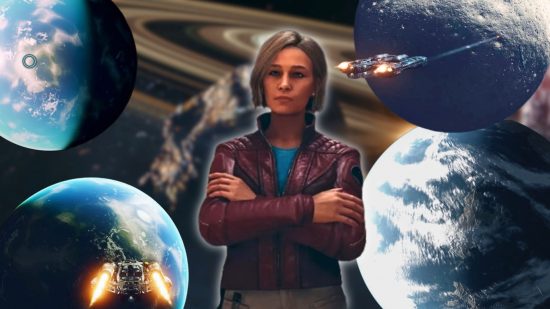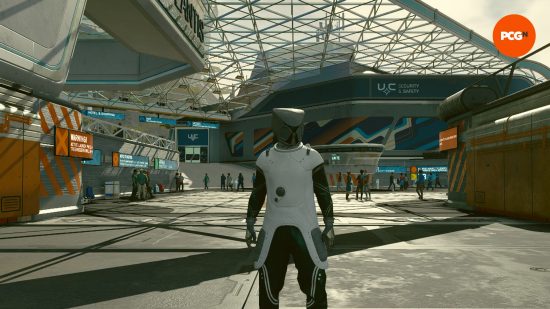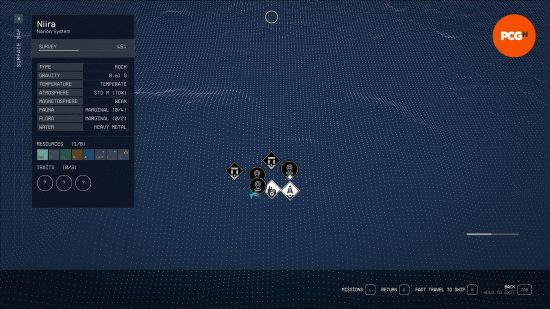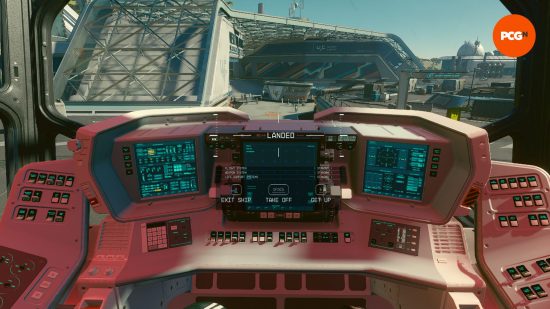Bethesda’s Starfield isn’t quite the same as Skyrim or Fallout. While the space-faring RPG does adopt many of the mechanics from the studio’s previous releases, the promise of a vast universe alongside a game of triple-A scale spreads many of the Starfield planets too thin, giving you scant reason to actually explore them.
In the lead-up to launch we’d constantly hear that despite being the team’s first new universe in 25 years, Starfield was still a Bethesda RPG through and through. While this is true for the brilliant Starfield quests, characters, and world-building, the act of exploration – of inhabiting a space and feeling like an explorer on a planet’s surface – takes a backseat.
The reason for this is simple: Starfield is too big.
If you start your journey in New Atlantis, the cultural and political center of Starfield’s United Colonies faction, you’ll find a bustling metropolis with something new placed around every corner. That could be a quest, an interesting character, or even an entirely different district.
Everything that makes a Bethesda game special comes together in a location like New Atlantis. An entire city is condensed into a neo-future municipality, with a staggering level of detail on show. This leaves New Atlantis, and other Starfield cities like it, untouched by the problematic scope of a 1,000-planet universe that more often than not feels too big for its own good.
Bethesda has always endeavored to make the act of exploration in its games worthwhile on its own merit. While it might have been interesting to present a universe largely untouched by human intervention, the problem with wandering across many of Starfield’s planets is precisely that lack of a human touch.
When you get to the atmosphere of a planet in Starfield, you’ll have one of a few options: scan a planet you can’t land on, pick a random spot and start exploring, or go to a designated location like a random science lab or a pirate-filled mine. After landing at one of these locations, Bethesda’s knack for giving you an organic sense of discovery completely disappears, because the lifeless map pings anything else of note for you straight away.
You’re not emerging from the Vault like in Fallout or seeing the light of Tamriel after escaping Helgen in Skyrim – you’re looking at a crudely drawn map of a zoo that keeps telling you it’s a safari.
Spreading out all of these points of interest over an entire universe, instead of one dense map like in previous Bethesda games, is essentially like dividing the map of Fallout 4 into chunks and putting loading screens between them. Sometimes the act of getting from one chunk to the next can be interesting, and sometimes that chunk itself can yield fun results, but when it doesn’t it just feels like you’re pointlessly meandering around the vacuum of space.
To give Starfield the credit it deserves though, when these locations or emergent moments do present themselves, they’re brilliant.
After taking the spaceship from the Starfield Mantis puzzle quest (one I highly recommend doing as soon as you can) I found a group of Spacer ships harassing a merchant spacecraft, and because they think I’m the actual Mantis they all panic over the intercom before grav jumping away. I get a thank you from the merchant, then land at the random planet I picked on a whim.

I didn’t expect this to happen, and it feels like Starfield’s equivalent of the emergent moments you get while exploring the worlds of previous Bethesda games. These types of scenarios do sometimes happen on planetary surfaces, too, with outposts, research stations, and landing ships presenting you with eye-catching moments. But that means very little if you have no reason to land on a planet in the first place, and these structures also have a tendency to reappear throughout your adventure in largely the same form, further reducing the feeling that you’re discovering something new and exciting.
Bethesda has always been good at giving you a large map with multiple objectives and letting you take whatever path you want to reach them. You can either go to your quest as the crow flies or snake your way to the objective, bouncing between smaller locales and characters until you get there.
In previous games, you’ll come across a thousand and one bespoke and recycled events, locations, and people on the way to your next waypoint, which gives the overarching exploration meaning by making the journey almost as, if not more, important than the destination. Some of these events lead to major quests and character moments, and some of it is just empty caves or bandit camps, but the two work together to create a healthy pace.
Starfield’s problem is that having so many individual planets completely separates your journey and destination, destroying the loop Bethesda is known for. When entire planets, which act as individual play spaces, have none of the bespoke Bethesda quests or events to speak of, instead opting for a few rocks to mine and random outposts to decimate, it feels like you’ve left your house to grab a balanced meal but ended up sitting on the street corner instead eating a soggy salad bowl with a wooden fork. I want to have my greens between steak bites, Bethesda, not just the greens themselves.
Despite all of this, I’m still enjoying Starfield. The visual design, lore, quests, and characters are some of the best in the developer’s history. But in opting to go bigger, on a universal scale, the team has lost the interconnectivity that makes the Elder Scrolls and Fallout games so great.
When entire planets don’t have that choreographed Bethesda goodness to work in tandem with the more copy-and-paste filler between major quests, there’s almost no reason to land on a distant planet never touched by humanity, because it feels like Bethesda hasn’t touched it either.
We’ve put together a full Starfield review that looks at the game on PC if you want even more insight, and we’ve got the best Starfield mods if you want to enhance your experience instead. Plus, if you’re racing through the Settled Systems, be sure to check out the best Starfield builds and best Starfield weapons for the endgame and beyond.
Still looking for more? While a good Starfield wiki can be a handy source of information, our new Starfield Database goes further, offering you daily news, searchable databanks, and even interactive tools.



